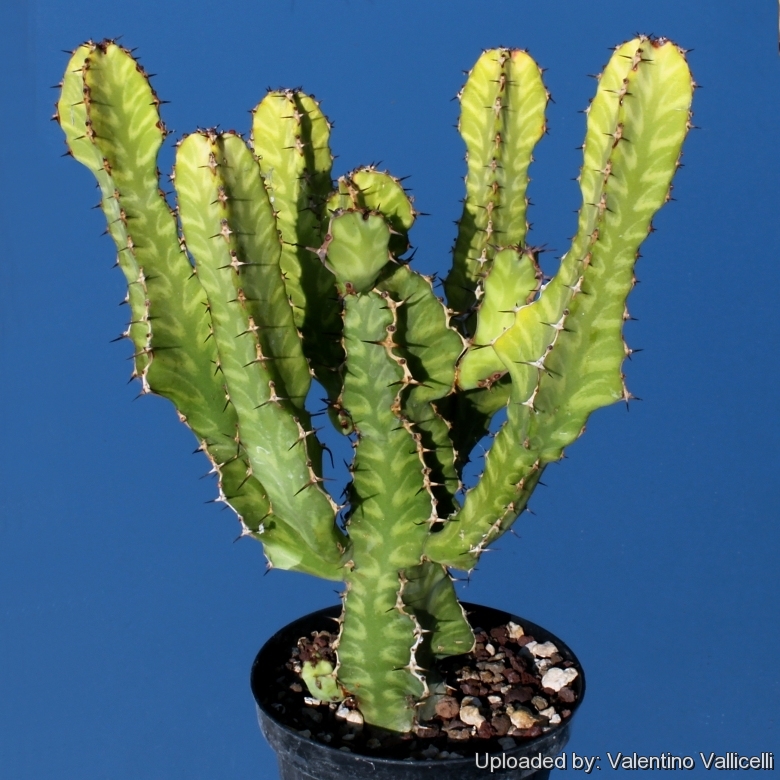
Euphorbia pseudocactus Photo by: Valentino Vallicelli
Probably one of the more popular of all the columnar Euphorbias with very attractive markings. Grows in a candelabra form and branches.
Origin and Habitat: KwaZulu-Natal (only near Muden)?. culture Italy?
Habitat: Thorny bush-lands and savannah often forming colonies.
Synonyms:
See all synonyms of Euphorbia pseudocactus
back
Accepted name in llifle Database:Euphorbia pseudocactus A.BergerSukkul. Euphorb. 78 (1907)Synonymy: 4
Cultivars
(2):
back
Common Names include:
RUSSIAN (Русский): Молочай ложный кактус, Молочай многореберный
Description: Euphorbia pseudocactusSN|14288]]SN|14288]] is a multi-branched, dwarf-stemmed succulent shrub that, as its name suggests, resembles a cactus. The stems often have distinctive yellow V-shaped markings. Plants eventually form large mounded clumps brancing from the base and above, 60-120 cm tall and up to 2 m in diameter.
Stem: Acutely-angled, irregular, constricted in broad, twisted, obovate to triangular segments about 5-15 cm long, which usually represents a year of growth. These segments are green of varying shades, conspicuously and ornamentally decorated with horizontal or "U" shaped grey-yellow or greenish-yellow markings. The difference in colour and markings has lead to the introduction of invalid names based purely on colour. On cross section the segments have very thin walls and irregular diameter varying from 2,5 to 7 cm.
Ribs: 3 to 5 (but usually 4) angular with wavy edges and sinuate teeth up to 1.5 cm apart.
Stipular spines: Stout 5-12 mm long joined in a horny margin. This margin is usually a white/grey, as are the spines. These often have a dark brown or black tip.
Leaves: Leaves only appear briefly, less then 3 mm at the very tips of the growing canters only, briefly in summer.
Inflorescences (cymes): 1-3 in an horizontal line from the "flowering eyes", mid-way between each set of spines, simple. Peduncles 2 mm.
Flowers (cyathia): Up to 7 mm across. Nectar glands oblong, yellow and touching.
Fruits (capsules): Subsessile, acutely lobed, to 14 mm across.
Seeds: Subglobose, 3 mm in diameter smooth.
Bloom Season: Late winter through Late Summer
Subspecies, varieties, forms and cultivars of plants belonging to the Euphorbia pseudocactus group
 Euphorbia х lyttoniana Dexter: It is a spineless variant with intense markings usually shorter, it is also more square in cross-section, forming very compact, dense colonies of upright columns, selected from cultivated material.
Euphorbia х lyttoniana Dexter: It is a spineless variant with intense markings usually shorter, it is also more square in cross-section, forming very compact, dense colonies of upright columns, selected from cultivated material. Euphorbia pseudocactus A.Berger: Multi-branched, dwarf-stemmed, candelabra shaped succulent, 60-120 cm tall. The stems often have distinctive yellow V-shaped markings. Plants eventually form large mounded clumps.
Euphorbia pseudocactus A.Berger: Multi-branched, dwarf-stemmed, candelabra shaped succulent, 60-120 cm tall. The stems often have distinctive yellow V-shaped markings. Plants eventually form large mounded clumps. Euphorbia pseudocactus f. cristata hort.: crested form.
Euphorbia pseudocactus f. cristata hort.: crested form.- Euphorbia pseudocactus cv. Miniature: (a.k.a. "dwarf form" )Seedlings of the miniature form sometimes appears among normal seedlings of this species. Their branches are (3-) 4- to 5-angled, little segemented and only 2 to 2.5 cm in diameter.
- Euphorbia pseudocactus cv. Zig Zag: (sometimes called a Zig-Zag plant): far more popular, it is similar in form to Euphorbia grandicornis, but a much smaller and more manageable size.
Bibliography: Major references and further lectures
1) Urs Eggli “Illustrated Handbook of Succulent Plants: Dicotyledons” Volume 2. Springer, 2002
2) Doreen Court “Succulent Flora of Southern Africa” CRC Press, 01/giu/2000
3) Gideon Smith, Neil R. Crouch “Guide to Succulents of Southern Africa” Struik Nature, 01/nov/2009
4) James Cullen, Sabina G. Knees, H. Suzanne Cubey “The European Garden Flora Flowering Plants: A Manual for the Identification of Plants Cultivated in Europe, Both Out-of-Doors and Under Glass” Cambridge University Press, 11/ago/2011
5) White, A., Dyer, R.A. & Sloane, B.L. 1941.”The succulent Euphorbieae, vol. 2.“ Abby Garden Press. Pasadena, California.
6) Hermann Jacobsen “A handbook of succulent plants: descriptions, synonyms, and cultural details for succulents other than Cactaceae” Volume 1 Blandford Press, 1960
7) Hermann Jacobsen “Abromeitiella to Euphorbia” Blandford Press, 1960
8) The Euphorbia Journal-Strawberry Press-Vol.1 Page 106/Vol 5 Page 144.
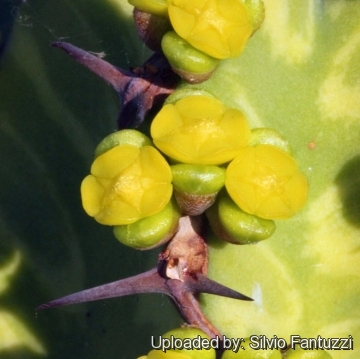 Euphorbia pseudocactus Photo by: Silvio Fantuzzi
Euphorbia pseudocactus Photo by: Silvio Fantuzzi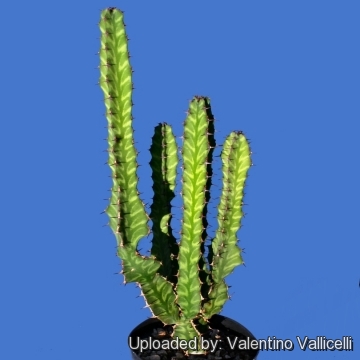 Euphorbia pseudocactus Photo by: Valentino Vallicelli
Euphorbia pseudocactus Photo by: Valentino Vallicelli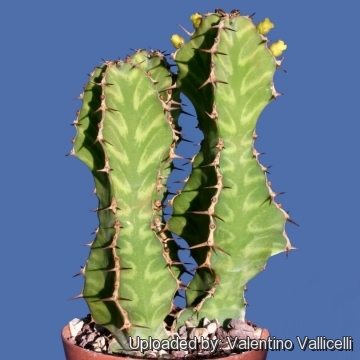 Euphorbia pseudocactus Photo by: Valentino Vallicelli
Euphorbia pseudocactus Photo by: Valentino Vallicelli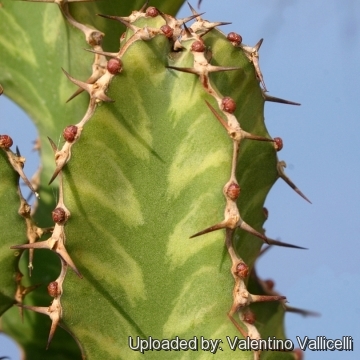 Euphorbia pseudocactus Photo by: Valentino Vallicelli
Euphorbia pseudocactus Photo by: Valentino Vallicelli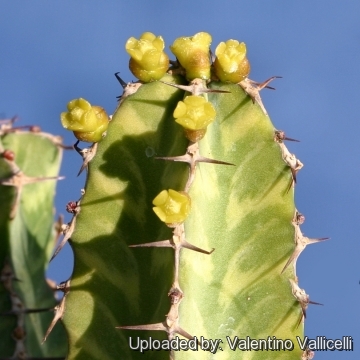 Euphorbia pseudocactus Photo by: Valentino Vallicelli
Euphorbia pseudocactus Photo by: Valentino Vallicelli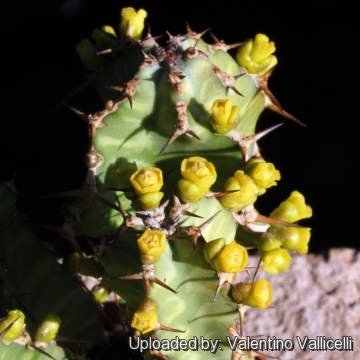 Euphorbia pseudocactus Photo by: Valentino Vallicelli
Euphorbia pseudocactus Photo by: Valentino Vallicelli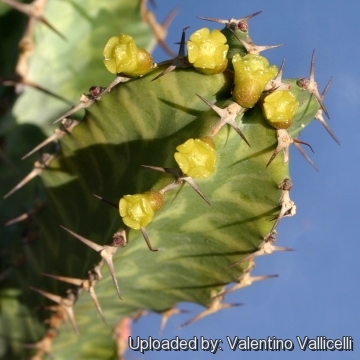 Euphorbia pseudocactus Photo by: Valentino Vallicelli
Euphorbia pseudocactus Photo by: Valentino VallicelliSend a photo of this plant.The gallery now contains thousands of pictures, however it is possible to do even more. We are, of course, seeking photos of species not yet shown in the gallery but not only that, we are also looking for better pictures than those already present.
Read More... Cultivation and Propagation: Euphorbia pseudocactusSN|14288]]SN|14288]] is an easy species to grow that is suited for any well drained soil in full sun. But young plant are happy growing indoors.
Growth rate: It is a relatively fast growing and long lived plant and once established, it will be content in its position and with its soil for years.
Soil: Give the plant an airy growing medium which mainly consists of non organic material such us clay, pumice, lava grit, and only a little peat or leaf-mould.
Repotting: It Like quite small pots, repott in very later winter, early spring.
watering: Water regularly during the active growing season from March to September. No water should ever be allowed to stand around the roots. Keep almost completely dry in winter. If plant becomes very red, this is a sign that the roots have not developed properly.
Exposure: It can tolerate moderate shade, and a plant that has been growing in shade should be slowly hardened off before placing it in full sun as the plant will be severely scorched if moved too suddenly from shade into sun.
Maintenance: Plants can be pruned for shape and branching.
Hardiness: Frost tender, frost free zones only.
Plant Pests: Prone to mealy bugs and rarely scale.
Propagation: It is easy to propagate by cuttings in late spring to summer, just take a cutting of the plant let it dry for 1 or 2 weeks and stuff it in the ground (preferably dry, loose, extremely well draining soil).
Warning: All Euphorbias contain a white sap that can be irritating to eyes and mucous membranes. If contact is made with this white sap, take care to not touch face or eyes before washing hands with soap and water.

















